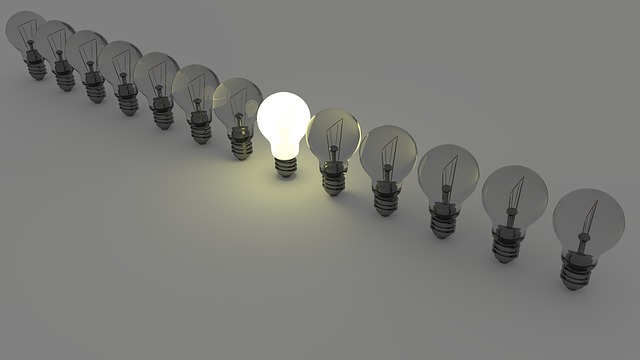How Much Money Can You Save by Turning Off the Lights?
We are familiar with the traditional habit of turning off the lights when not in use at home. Our parents are constantly particular with never leaving the house without switching off the lighting fixtures. This is because accordingly, energy and money are seriously saved by doing so. However, can we really save enough money by turning off the lights? Is there really truth about this recurring wisdom and then how much?
Turning off the lights for the mere reason of saving money highly depends on what type of bulb you are using and the cost of the electricity. Each type of light bulb has a minimal or rated operating life that can be affected when they’re switched on and off.
Read Tips for Cutting Power Bill in Your Business.
Traditional Incandescent Lights
Incandescent lights, which are the oldest lighting technology, are the least efficient and the most expensive to operate. Therefore, they have to be turned off when not in use. Only 10 percent of the energy they use results in the light, the remaining 90 percent is heat. So, turning off incandescent lights will keep the house cooler especially during summer season.
Stand-in Halogen Lights
Halogen lights work the same as the incandescent bulbs that produce light from a heated tungsten filament. However, inside the bulb they feature a halogen gas which keeps the filament firm as it heats. The bulb is also relatively smaller than the traditional incandescent type. It also produces brighter light and doesn’t burn out so quickly. And just like the customary incandescent lights, energy and money are saved when they are switched off during idle periods.
Contemporary CFLs
In the case of Compact Fluorescents or CFLs, the cost effectiveness of switching them off to save energy and money has a complex manner. When the room will not be in use for only 15 minutes, you leave it on. But if it will be unused for more than 15 minutes, then turn it off. The repetition of turning it on and off affects the operating life of CFLs. And by and large, its life can be extended by turning it on and off less recurrently more than using it in fewer times. This is particularly because CFLs generate a huge amount of energy the moment they start, so they should not be switched off for shorter periods. Although each CFL energy consumption differs between models and manufacturers, those bulbs rated with Energy Star are recommended to tolerate hasty five-minute intervals and can withstand frequent switching.
It is measured that switching off fluorescent lights for more than 5 seconds will save more energy than will be consumed in switching them back again. This is because the extent of electricity needed to supply the inrush current, which is basically 1/120th of a second, is equivalent to a few seconds of a normal light operation. Consequently, the main concern is that if the worth of the electricity that you save when you turn off the light is comparative to the cost of buying another light bulb.
However, the energy saved by switching off a CFL depends on a number of aspects. There are different electricity charges depending on each customer class. There are different rate schedules for each class of residential, commercial and industrial. In different times off the day the rate also changes. There is a high cost for utilities to produce power during peak season or high demand periods. Also, commercial and industrial are generally charged more kilowatt-per-hour compared to residential. Certain utility companies also charge a base rate for a particular level of use and consequently higher rates for increasing chunks of utilization.
Proficient LED
Light Emitting Diode or LED has an operating life that is not affected by switching it on and off. Turning on and off does not provide LED’s lifetime negative effect unlike with fluorescent bulbs where lifetime is reduced when they are turned on and off often. LEDs bring a mile of advantage when it comes to an operation such as when used in combination with daylight or occupancy sensors that rely on an on-off procedure. In addition, LEDs instantly turn on at full brightness and are not affected by vibration because they do not feature glass enclosures or filaments.
How to Effectively Calculate Energy and Money Savings
To efficiently compute the accurate value of energy being saved by turning off a lightbulb, it is best to know the amount of energy the bulb consumes when it is turned on. Each light bulb has a specific watt rating provided. Take for example a 60-watt bulb that is turned on for an hour, it will consume 0.06 kWh. So if it is turned off for about an hour, then an energy savings of 0.06 kWh is made.
The second step is to determine how much is paid for electricity per kWh. This can be done by looking and analysing the electricity bills. Multiply the amount of electricity saved by the rate per kWh and this will determine the value of the savings. With the example given above per 60 watts and the electric rate is 10 cents per kWh, then the amount of energy savings is 0.4 cents. The amount of savings increases as the watt amplifies.
The cost-effectiveness of turning off lighting fixtures should override the total cost of replacement of the bulb that is including the cost of the bulb and the labour to do it. Manufacturers should have transparent information regarding the operational cycle of lighting products to determine this.
There is indeed energy and money saved during the course of turning off our lighting fixtures in our house. But as said, all depends upon which kind of bulbs is being used. If you opt to not be bothered by turning off the lights, go for CFLs and LED and make sure to follow their general rule-of-the-thumb when it comes to energy savings. For best results, call and ask the help of registered electricians. Call me on 0403 026 531.


Recent Comments